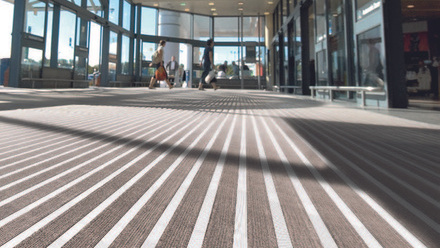Structural safety guidance issued for design of reinforced concrete transfer slabs
A group of structural engineering experts led by the Institution of Structural Engineers (IStructE) has compiled a new guide to help building designers, contractors, and assessors better understand the complexities of a common solution in building design – the transfer slab.
“Design of transfer slabs” has been created by AECOM, IStructE, MPA The Concrete Centre, and Imperial College London, with technical reviews provided by Buro Happold and Simpson TWS.
The technical guide is intended for the design of new transfer slabs. The assessment of existing slabs is not covered.
It provides guidance on concept design, design for robustness, and suitable methods for the assessment of punching shear in transfer slabs. The recommended punching shear assessment methods differ significantly from the methods used in typical flat slabs.
Despite being a widespread typology, the document suggests that there is currently a lack of understanding, robustness and consistency in the design approaches adopted for transfer slabs.
IStructE said the industry should be pushing for designers, contractors and assessors to understand the inherent complexities, safety implications and sustainability issues of adopting this construction method.
A transfer slab takes the load from columns that sit above the slab and transfers it to supporting columns placed underneath without the provision of transfer beams.
They are commonly used in reinforced concrete (RC) buildings throughout the world to facilitate a change in column grid, for example as ground floor podium slabs in mixed-use tower blocks, or at high level to allow for a step back in a building for architectural reasons.
Patrick Hayes, Technical Director at IStructE says:
At present, there is no industry-wide guidance for the design of a transfer slab, especially for punching shear. To do this work successfully, an engineer needs to have a great understanding of the behaviours of concrete, how column shears interact, disproportionate collapse, and construction sequence effects. It’s a complex process.
We’ve therefore worked together with industry on this guide to fill a significant knowledge gap in the design of reinforced concrete (RC) buildings with transfer slabs that has a potentially major impact on safety.
Matt Penellum, Principal Engineer at AECOM and author of the guide adds:
From a structural perspective, the use of transfer slabs is rarely desirable. They have a high embodied carbon, tend to be structurally inefficient, and are challenging to design. However, with their use becoming increasingly widespread to facilitate more flexible layouts in mixed-use developments, it is important that there is a clear, industry-approved method for undertaking their design. That is what this guide hopes to achieve.




